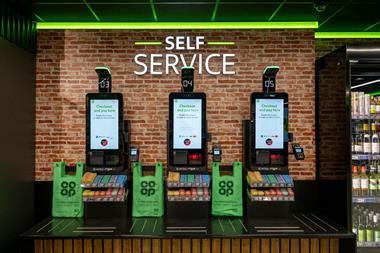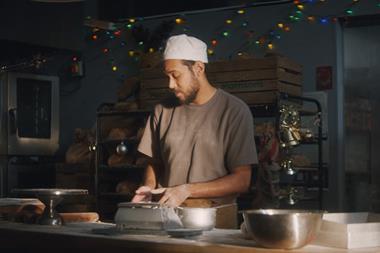Crowd sourcing can form the basis of brilliant marketing. Rebecca Thomson finds out how retailers can use their customer base to inform their campaigns

Marketing was once the preserve of the professional, whose expertise was valued for its creative flair and its in-depth knowledge of the target consumer. But with the advent of online forums and social networks, anyone can have an impact on the image of a company, and the whole process has become more complex.
In this digital era, every customer who’s interested enough can play a part in shaping a brand’s image in the eyes of the public. The marketer’s role has changed. No longer can a company come up with a campaign idea, create it and broadcast it. The best marketers are the ones who listen through exercises such as crowd sourcing, and some of the most successful campaigns are those that show evidence of listening.
Crowd sourcing has developed alongside the social web – it involves asking your online followers and friends about a specific question or trawling their comments for ideas. And it doesn’t matter if you don’t have a ready-made online community, because online forums like Mumsnet can be just as useful as your own web contacts if you approach it in the right way.
Part of the community
Waitrose is dipping its toe in the crowd sourcing water, after it decided to ask users of its community site, My Waitrose, to help with the process of developing a new dessert product. Digital editor Courtney Freedman-Thompson says the grocer’s first attempt was successful: “We were surprised at the level of interest and how committed people are in helping produce new ideas.”
The grocer asked members on the community site to come up with ideas for the product, and launched the Seriously Chocolatey Rose-Infused Chocolate Ganache in May after finding the winner, Esther Blight. The product packaging mentions the My Waitrose site, boosting awareness of the network, and Freedman-Thompson says the aim was to get some insight into how customers think and develop the company’s relationship with its consumers.
Waitrose’s project focused on the development of a new product rather than the development of a marketing campaign, and some say the best use of crowd sourcing in retail may be around product development rather than marketing. But Alice Driscoll, managing partner at creative agency pd3, says the two can be combined if retailers are clever about it. “You can turn your search for your next product into a marketing campaign,” she says. She cites ice cream brand Ben and Jerry’s as another example of how to do it. The brand used its recent campaign both to generate ideas for flavours in its new fair trade line, and to emphasise its fair trade credentials and boost its ethical image.
People are keen to be involved, Driscoll says, and if they don’t feel as though the retailer is listening they’ll take their opinions elsewhere. Not only could this lead to bad PR, but it means the retailer is missing out on a valuable source of insight.
“People love being asked things and getting involved with brands they love,” says David Yates, planning director at digital agency Kitcatt Nohr Digitas, which worked with Waitrose on the dessert project. Adam Fulford, head of planning at digital communications agency Grand Union, agrees: “For most brands there’s core consumers who are passionate about the brand and want to engage with it. If you don’t give them the opportunity, they’ll talk about it anyway.”
A source of inspiration
Having a passionate, informed group can be useful for getting a steer on individual questions about everything from products to logos – Gap learnt the hard way that people are ready and waiting to voice their thoughts when it changed its well-known logo and caused an internet furore as a result. But it can also be used as a more general source of inspiration for marketing campaigns and messages. Marketing ideas don’t necessarily have to be directly crowd-sourced, but consumers’ thoughts and musings on the brand can be rich pickings for those looking for ideas.
“If retailers are being smart, they will be listening to their consumers,” says Driscoll. “It can spark an idea, they can inspire you – it’s not about us getting consumers to do something instead of doing it ourselves.” Not only can crowd sourcing provide answers to certain questions, it can also act as a research tool or good source of inspiration on what your next marketing campaign might be and Driscoll advises staying open minded when assessing the different ways crowd sourcing can be used.
The opportunities are plentiful, but how do you get started? Freedman-Thompson advises starting small, and keep questions specific at first. Waitrose plans to explore more uses of crowd sourcing but she says keeping the first question very specific helped. “Keep it simple in terms of what you want customers to do,” she says. “If you want them to help you need to make it easy for them.”
Waitrose used its own online community to get suggestions for its dessert, although Yates says any social network such as Facebook or Twitter can be used for starting conversations and talking to people. The grocer received about 300 ideas, which it whittled down to 10, which site users were then asked to vote on. Voting produced a shortlist of three, and a tasting produced the winner.
Forums vs social networks
Depending on what you want to do, Fulford says specialist online forums are sometimes more useful than social networks if you want to understand what customers think is important and what they’re criticising. Mumsnet is perhaps the best known, with millions of users discussing everything related to childcare, while Pistonheads.com is a good source of information for any retailers in or related to the automotive industry. “If you want rich, informed conversations around specific areas, forums can be much more searchable than Facebook, where a lot of the conversations are sheltered from search,” Fulford says.
Once you do have a strategy to pursue, it’s best to use a convivial tone says Yates. “People tend to respond really well to the ‘insider’ tone of voice, it makes them feel part of the business.” He says the marketing communication tone of department store Liberty hits the right note, making customers feel they are part of the brand.
Sifting through the information generated will take time – if you’re asking users for ideas, the whole project needs to be carefully managed, and the simple act of listening on a forum can produce reams of information that need processing. But Driscoll says it’s worth it: “Getting consumers to do it, reviewing all their ideas, filtering everything through, is harder work than just doing it ourselves. But it’s worth the effort because the process of making people feel involved is so powerful and the end result will be much more relevant.”
Thompson agrees that processing the results can be a challenge, but that it’s up to the retailer to set clear parameters and keep things simple to avoid being overwhelmed.
As with all new tasks, crowd sourcing brings its challenges. But the benefits of knowing your audience are substantial for any brand, and retailers are no exception.
Crowd sourcing tips
- Keep things simple if there is a specific question you have in mind to ask. Keep timescales and parameters clear, and the question straightforward
- Use forums, as well as social networks, for ideas and inspiration. It’s easy to find out what consumers are saying about a brand or product, and their thoughts can spark ideas for marketing campaigns
- Accept it’s impossible to control what people are saying about your brand, and adopt a policy of total transparency and honesty. Customers and forum users will see through anything else eventually
- Use a conversational tone when talking to people – it makes them feel part of the business and will maintain their interest


























No comments yet